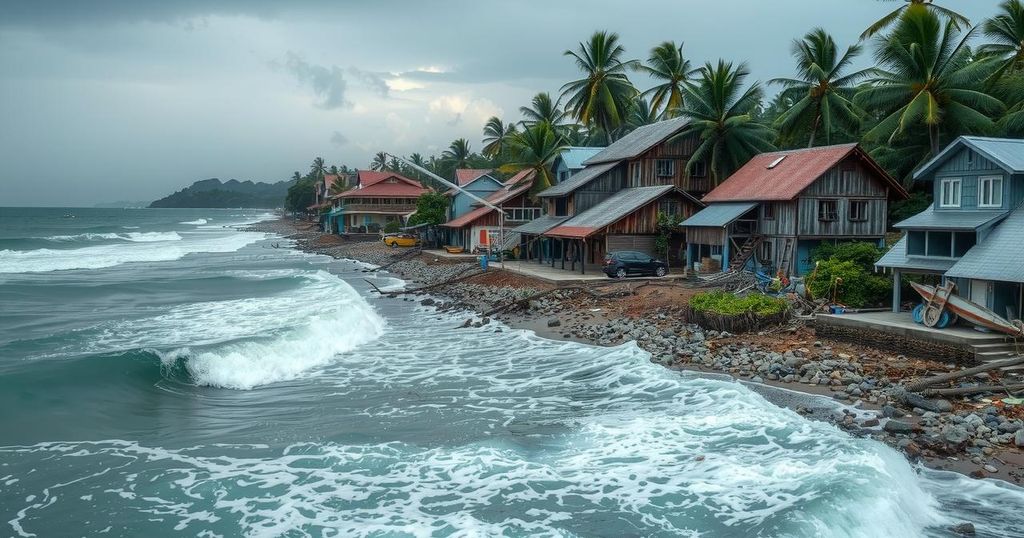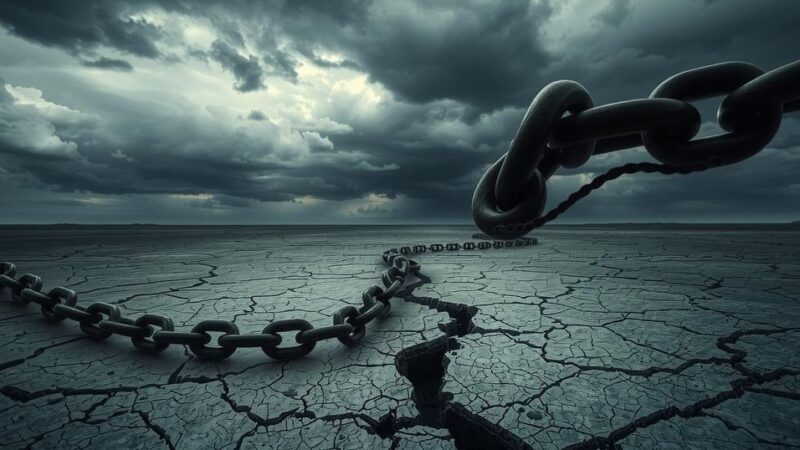The 20th anniversary of the 2004 Indian Ocean tsunami is marked by reflections on its impact, which resulted in over 220,000 deaths across multiple countries. Triggered by a 9.1-magnitude earthquake, the tsunami caused widespread devastation, particularly in Indonesia. It prompted significant humanitarian response and led to improvements in disaster readiness, specifically through the establishment of tsunami warning systems.
This week, survivors and relatives of victims will gather to commemorate the 20th anniversary of the devastating 2004 Indian Ocean tsunami, a catastrophic event that resulted in the loss of over 220,000 lives across several countries. Triggered by a significant 9.1-magnitude earthquake off the coast of Indonesia’s Sumatra island, the tsunami caused immense waves that impacted Indonesia, Sri Lanka, India, Thailand, and nine other nations surrounding the Indian Ocean.
The phenomenon began with a colossal faultline rupture, the longest ever recorded, occurring at 7:59 a.m. on December 26, 2004. This geological event opened the ocean floor along a stretch of at least 1,200 kilometers (750 miles) between the India plate and the Burma microplate, generating waves taller than 30 meters (100 feet) and releasing energy equivalent to 23,000 atomic bombs. While initially measured at 8.8, the earthquake achieved a confirmed magnitude of 9.1 with a depth of 30 kilometers (18.6 miles), its epicenter located 150 miles from Sumatra’s coast.
In total, 226,408 individuals died due to the tsunami, with the greatest casualties seen in northern Sumatra, where the death toll surpassed 120,000. The rapid movement of the waves, which traveled at speeds over 800 kilometers per hour (500 mph), also impacted Sri Lanka, India, and Thailand hours later, leading to significant fatalities in these nations as well. In addition, many lost their lives in Somalia, the Maldives, Malaysia, and Myanmar.
The aftermath of the tsunami saw more than 1.5 million people displaced and catalyzed a global disaster relief effort, resulting in approximately $14 billion being pledged. Reconstruction efforts were extensive, with over 100,000 houses rebuilt in Aceh, transforming affected communities, particularly in Banda Aceh, the city hardest hit. Furthermore, the disaster prompted a re-evaluation of tsunami preparedness in coastal regions. At the time, no early warning system existed; however, advancements have led to the establishment of 1,400 warning stations capable of providing notice just minutes after wave formation.
As experts highlight, while investments in tsunami warning systems have improved preparedness, the unpredictability of such catastrophic events remains a challenge. The 2004 Indian Ocean tsunami, regarded as the deadliest in history, emphasized the necessity for global cooperation and coordination to minimize the impact of future tsunamis.
The 2004 Indian Ocean tsunami is a critical event in geological and humanitarian history, marked by a catastrophic earthquake that triggered massive waves across the Indian Ocean basin. The earthquake’s magnitude and the resultant tsunami are pivotal topics in discussions about disaster preparedness and response mechanisms. The event has led to significant advancements in tsunami warning systems and has transformed how nations approach disaster management, highlighting the importance of international collaboration in giving timely warnings to vulnerable coastal communities.
The 20th anniversary of the 2004 Indian Ocean tsunami serves as a sobering reminder of the devastating power of natural disasters. As communities reflect on the enormous loss and the rapid recovery efforts, they also recognize the lessons learned in disaster preparedness. Enhanced tsunami warning systems and international cooperation are now critical elements of response strategies, yet the unpredictability of such natural events continues to pose challenges for global communities in safeguarding lives.
Original Source: www.france24.com






